Don't be intimidated to serve spinach to your baby! Here are all the helpful tips and recipes you need to introduce this nutritious green vegetable with ease and confidence!
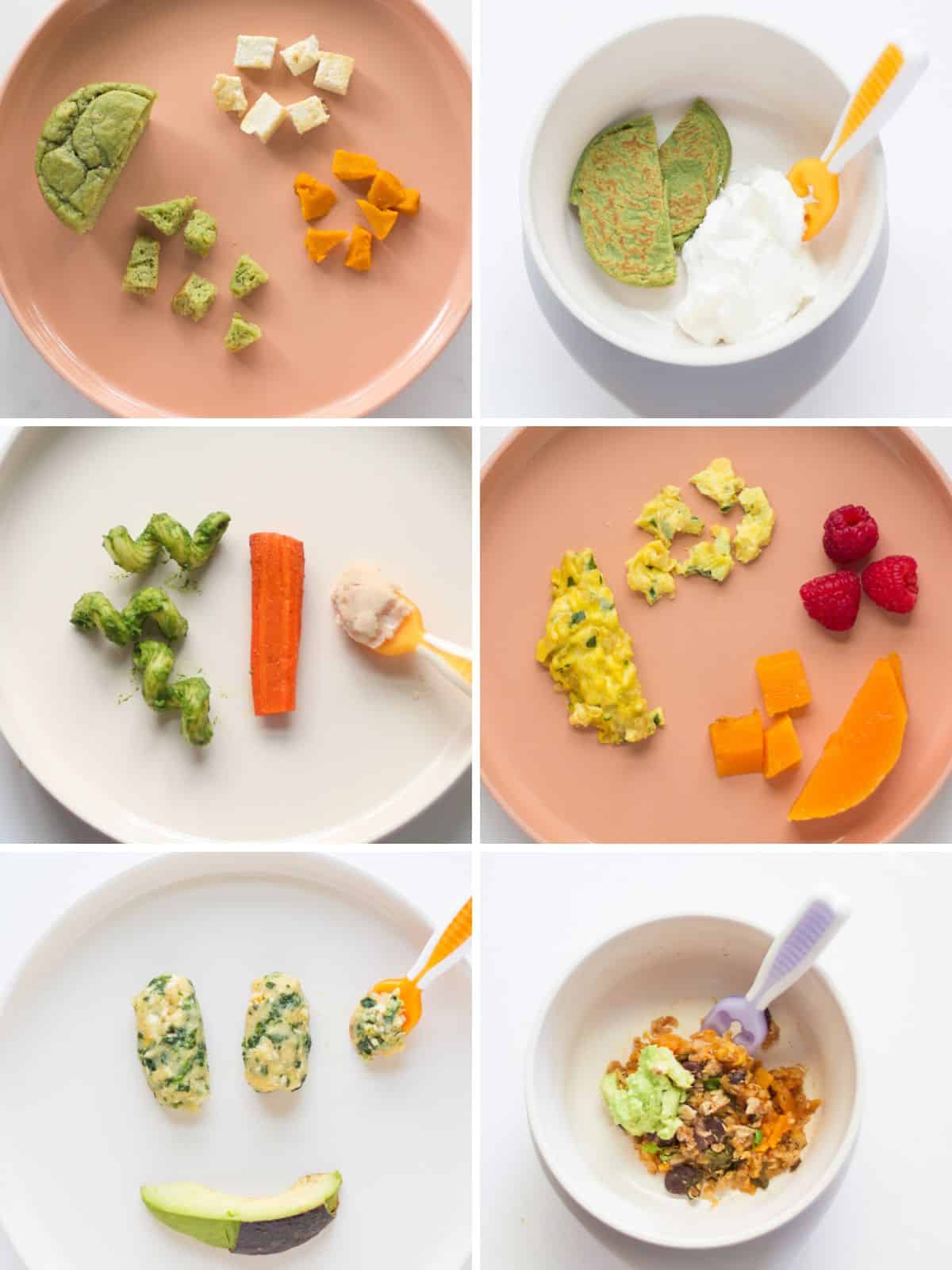
Jump to:
When Can Babies Eat Spinach?
This nutritious green vegetable can be offered to babies as soon as they’re ready to start solids, usually around 6 months. It’s important to remember that your baby is unique and that rather than going by the calendar, you need to make sure your baby is DEVELOPMENTALLY ready to start solids.
If you’re unsure, be sure to grab my FREE handout!
Health Benefits
Spinach is chock full of nutrients! It's an excellent source of vitamin K, vitamin A, and vitamin C, which helps support strong bones and the immune system. It also delivers iron, the most essential nutrient at this age, and folate that helps form red blood cells and DNA.
Spinach is a great source of two antioxidants, lutein and zeaxanthin, two carotenoids that are linked to improved eye health (also found in eggs).
Are Spinach Safe for Babies?
As long as it's prepared and offered in an appropriate size and texture, it is safe. Let me show you how!
It is also not a common allergen. And If you were told to avoid due to nitrates, be sure to read the FAQ section!
Choosing and Storing Spinach
Look for spinach leaves that are dark green and crisp, not yellow or limp.
Keep spinach in the original bag or plastic container and wash just prior to use. I also like to put a paper towel in the container to help absorb any moisture.
For unpackaged spinach, store in a dry, unsealed plastic bag.
Do NOT wash before storing in the refrigerator as moisture leads to faster deterioration. You can also freeze spinach.
Cooking Methods
Saute
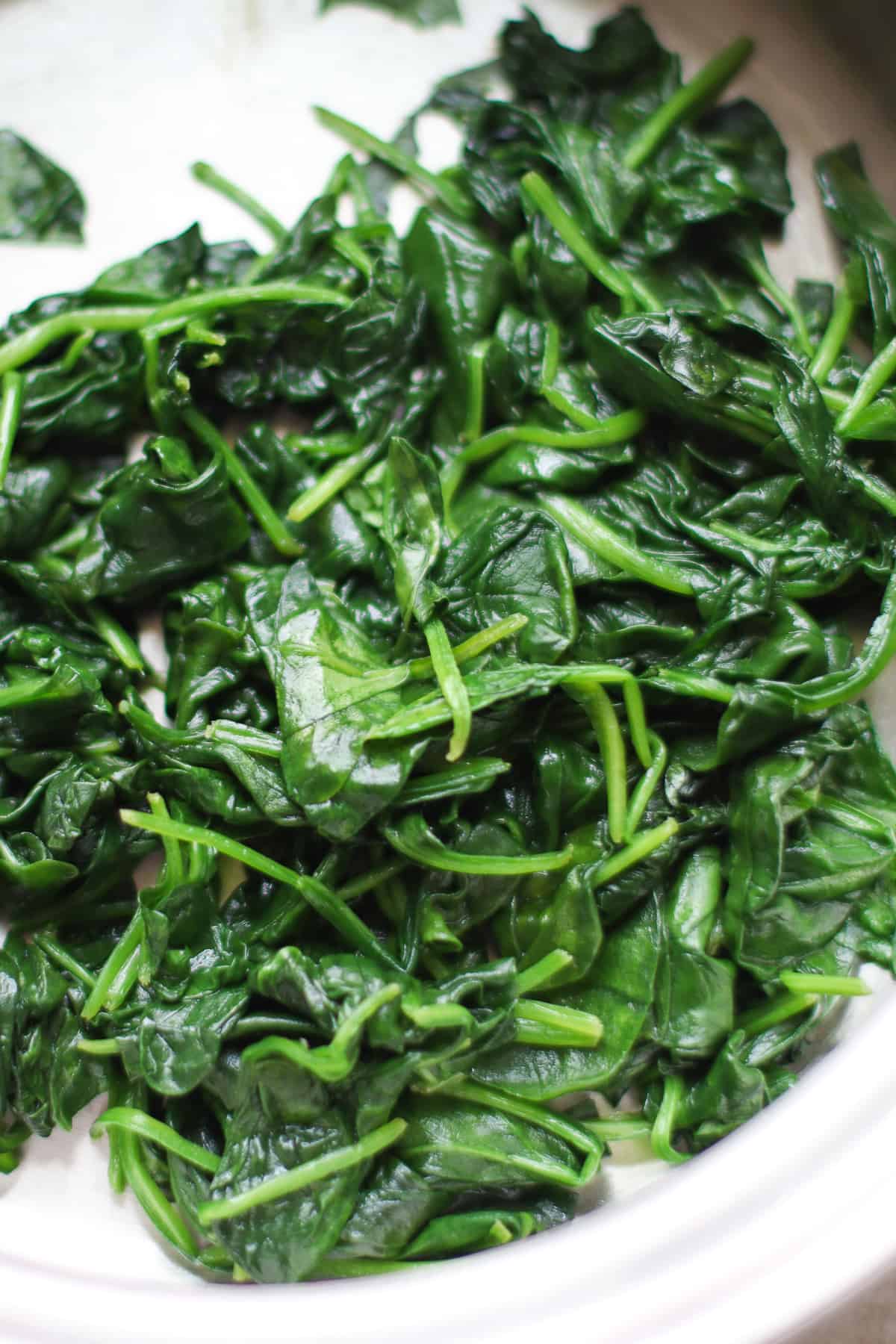
This is my go-to method because it's so easy and I just need to dirty one pan.
- Remove the stems from the spinach or leave on if using baby spinach. Wash thoroughly.
- Heat oil in a large skillet over medium heat.
- Optional step: Add garlic and saute for about a minute or so until fragrant.
- Add spinach, a handful at a time and pack it down. Give it a good toss, cover the pan, and cook for 1-2 minutes. Uncover and cook for another 2-3 minute, or until all the spinach is wilted. I like to use my tongs to lift and stir the spinach.
Steam
- Remove the stems from the spinach or leave on if using baby spinach. Wash thoroughly.
- Add water to a pot and insert the steamer basket. The surface of the water should be under the basket. Pour some out if need be.
- Bring the water to a boil. Add spinach, cover the pot, and reduce the heat to simmer. Cook for about 1-2 minutes, until the leaves are slightly wilted and tender. Season with an herbs and spices of choice.
Spinach Puree
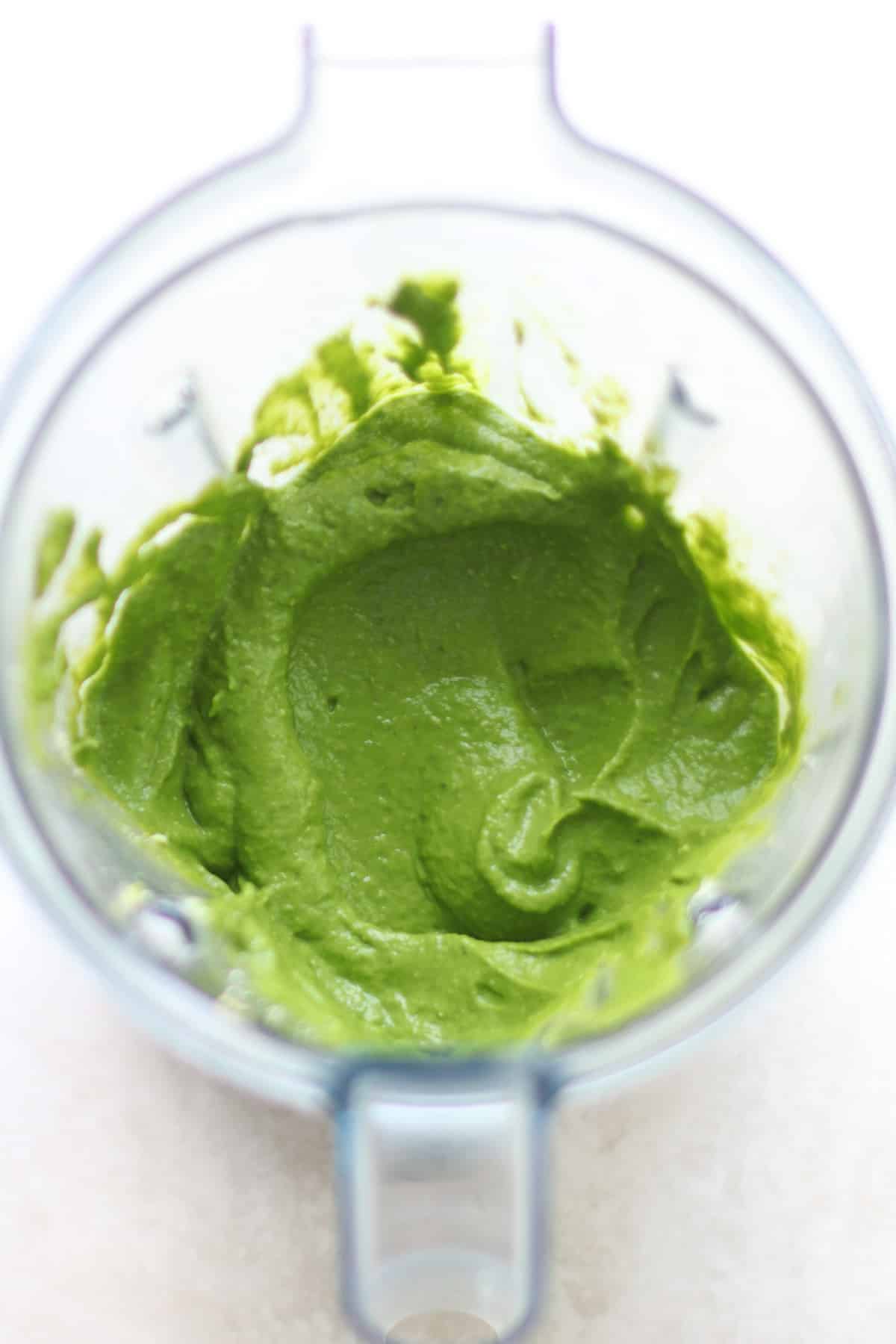
- Steam or saute spinach.
- Transfer to a food processor or blender and blend until smooth.
How to Serve Spinach to Babies
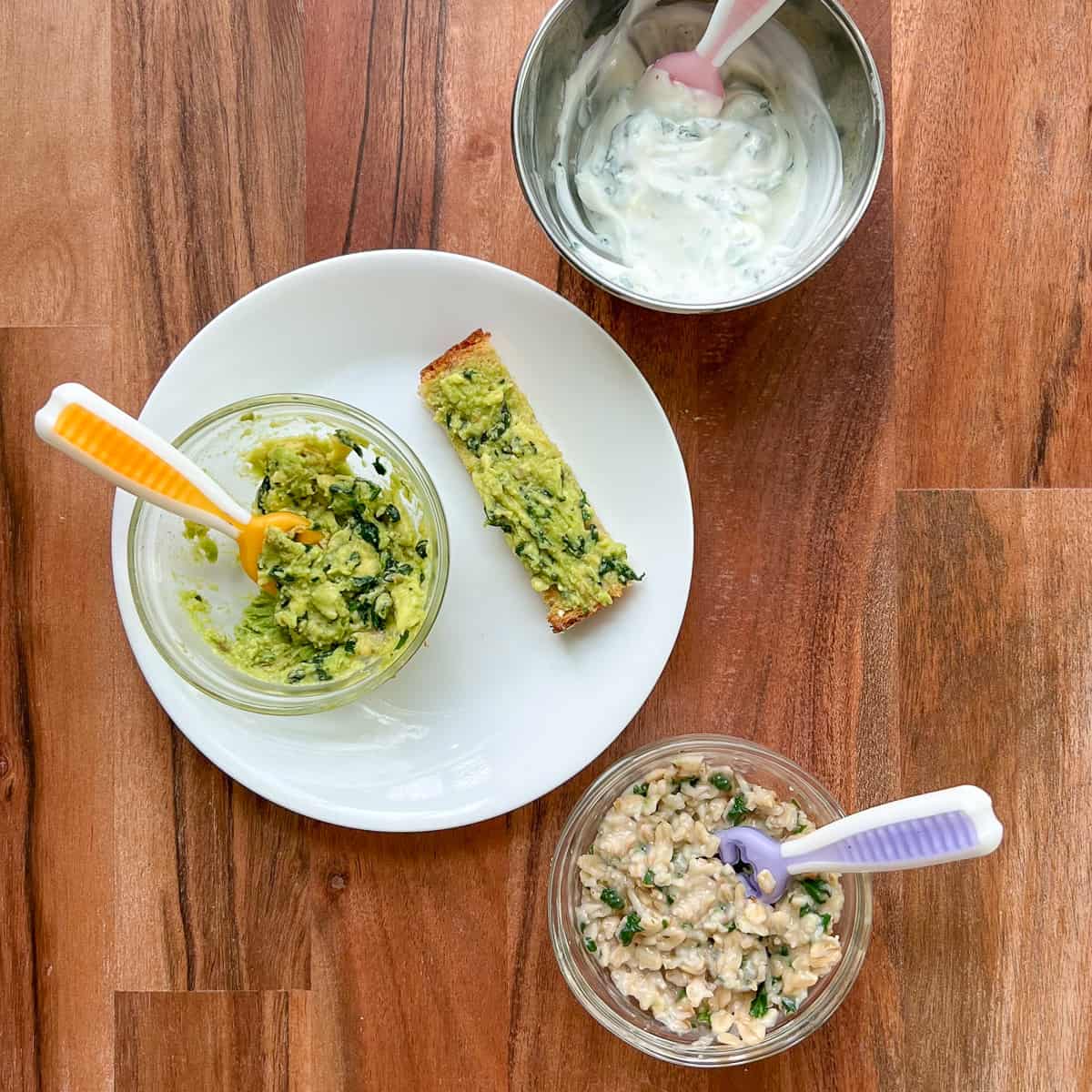
Spinach is an incredibly versatile leafy green vegetable. Don't believe me? Here are some easy baby-friendly recipes to try!
Simply add finely chopped cooked or raw spinach or spinach puree to these foods to make every bite count:
- Homemade baby oatmeal
- Quinoa
- Lentils
- Overnight oats/quinoa
- Toast - combine spinach with mashed avocado, sweet potatoes, yogurt, etc. to make it spreadable.
- Yogurt
- Scrambled eggs
- Vegetable omelette
- Vegetable French toast
Spinach Recipes
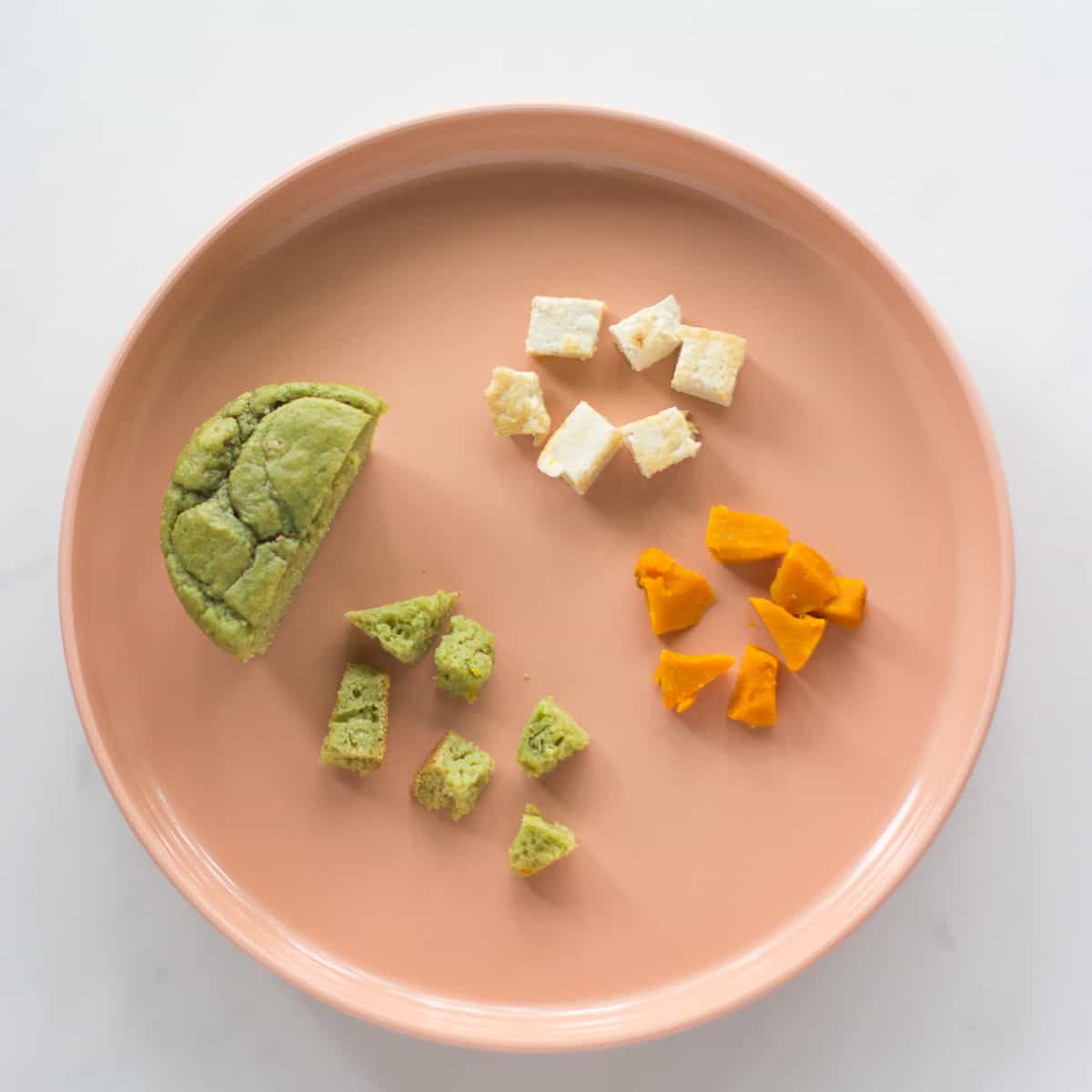
And here are some family-friendly recipes with spinach. If it's not blended, be sure to finely chop the spinach before serving. I like to use my kitchen shears for this.
- Spinach Pancakes
- Spinach muffins
- Spinach Cakes
- Green pasta sauce
- Pumpkin seed Spinach hummus
- Chicken quinoa casserole
- Quinoa and Beef Meatballs
- Savory baked oatmeal
Frequently Asked Questions
Nitrates are natural chemicals that are found in the soil, air, and water. Therefore, they’re found in many vegetables. When consumed in excess, they can negatively affect blood counts, resulting in lethargy and breathing difficulties.
But this is rare for babies 6 months old and up. The American Academy of Pediatrics recommends that foods with naturally occurring nitrates be avoided before 3 months of age. This should be easy since babies don't need solid foods until around 6 months of age.
Vegetables provide so many beneficial nutrients that the benefits typically outweigh any harmful effects. But this is also another reminder to incorporate more variety into your child's diet. Too much of one food, whether good or bad, is not ideal.
If you are very concerned, purchasing organic will help minimize the intake of nitrates.
Both are great! Frozen spinach is harvested at peak ripeness, blanched quickly, and flash frozen to preserve most of the nutrients, kill bacteria, and prevent spoiling. They both contain very similar nutrient profile.
Since babies won't be able to chomp through a whole spinach leaf, be sure to finally chop before folding into various foods as suggested above. Generally speaking, after 2 years of age is when you can start offering larger pieces of raw spinach.
If you want to learn how to prepare other specific food(s), check out my How To Series!
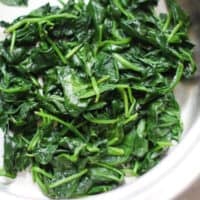
How to Cook Spinach for Babies
Equipment
Ingredients
- 8 ounce fresh baby, flat-leaf, or curly-leaf spinach
- 1 tablespoon olive oil
- 1-2 teaspoons minced garlic (optional)
- herbs/seasonings of choice (optional but highly recommended)
Instructions
- Remove the stems from the spinach or leave on if using baby spinach. Wash thoroughly.
Saute
- Heat oil in a skillet over medium heat. Add garlic, if using, and saute for about a minute or so until fragrant.
- Add spinach, in batches if necessary, and stir using tongs until wilted. Season with herbs/spices of choice.
Steam
- Add water to a pot and insert the steamer basket. The surface of the water should be under the basket. Pour some out if need be.
- Bring the water to a boil. Add spinach, cover the pot, and reduce the heat to simmer. Cook for about 1-2 minutes, until the leaves are slightly wilted and tender. Season with an herbs and spices of choice.
Spinach Puree
- Steam or saute spinach. Transfer to a food processor or blender and blend until smooth.
Notes
- Transfer cooked spinach into an airtight container and keep in the refrigerator for 3-5 days.

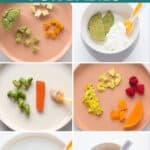

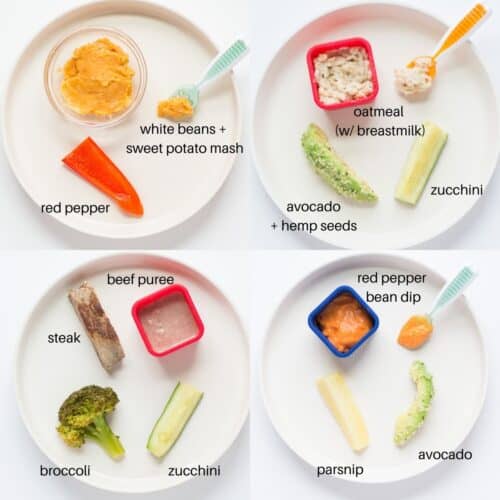
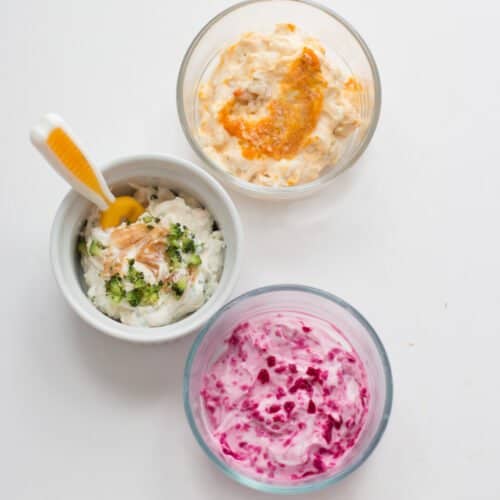
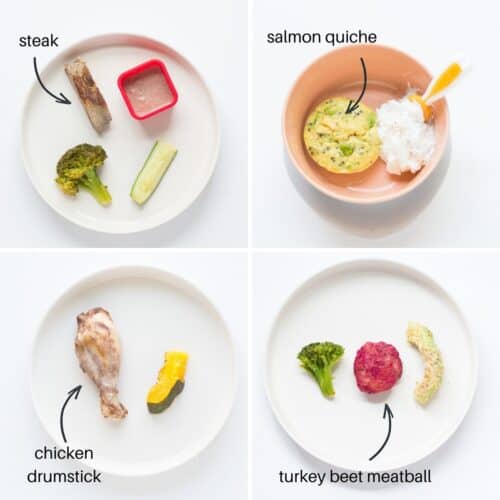

Leave a Reply